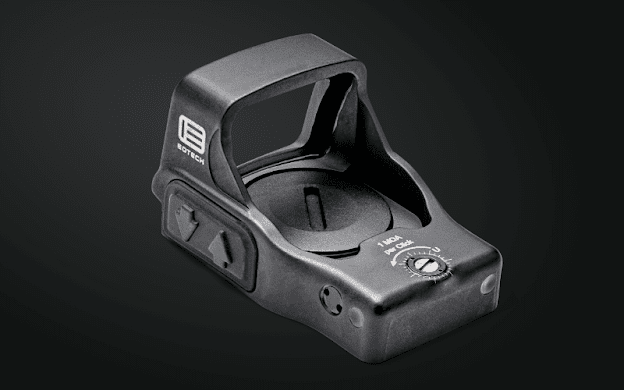On March 20th 1901, at a meeting of the Royal Dublin Society, Sir Howard began the explanation of his new invention as follows:
When it is necessary to point any
instrument at an object, whether it be a rifle, or a gun, or a telescope, it is
usual to do so by glancing at the object along the axis of the instrument, or
some member or part which is parallel to the axis, bringing this part as nearly
as possible into line the of sight between the eye and the object aimed at.
This is done instinctively, without any education or instruction, and it is
curious to note that in this, the twentieth century, the most primitive and
unscientific method still endures, and is used in all but exceptional cases for
sighting purposes in our most modern weapons.
He continued by describing a theoretical sight we may also
recognize:
It would be possible to conceive an
arrangement by which a fine beam of light like that from a search light would
be projected from a gun in the direction of its axis and so adjusted as to
correspond with the line of fire so that wherever the beam of light impinged
upon an object the shot would hit. This arrangement would be of course equally
impracticable for obvious reasons but it is instanced to show that a beam of
light has the necessary qualifications for our purposes.
Now the sight which forms the
subject of this Paper attains a similar result not by projecting an actual spot
of light or an image on the object but by projecting what is called in optical
language a virtual image upon it.
These points included:
- The aiming mark being sharply defined simultaneously with the object being aimed at, meaning that the shooter could keep both the aiming mark and the target in focus simultaneously.
- Little to no parallax. As long as the aiming mark and the target were both visible, the bullet would impact where they coincided.
- The ability to be used with or without magnification.
- Any form of aiming mark, whether cross, circle, or other, could be used, even those impossible in traditional magnified optics of the time.
- His design was self-contained and easily detachable from the weapon.
- The sight itself has no adjustments, so it is not possible to be put out of order or adjustment unless actually broken.
- The field of view is practically unlimited and the view of the horizon is not obstructed.
- The aiming mark can be conveniently illuminated and the sight used as effectively at night as in the day.




No comments:
Post a Comment